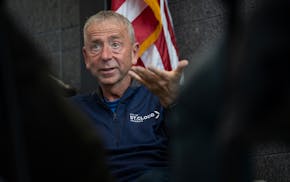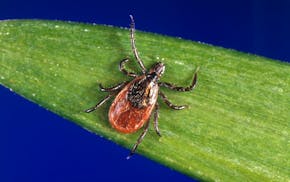I am an RC airplane hobbyist, so I have been watching the proceedings on the regulation of drones with some interest ("Close calls spur feds' move to register drones," Oct. 20). I am a member of the Academy of Model Aeronautics (AMA), and there are a number of rules to which we members adhere, both for our own safety and others'. One of those rules is not to fly at a distance greater than we can see the plane with the naked eye. Our radios will reach farther, but it is very important to know where your aircraft is at all times. Another rule is to fly under 400 feet of altitude. Some of the reports from airline and full-scale pilots claim they have encountered drones at altitudes of 3,000 to 5,000 feet. When I first heard these reports, I was skeptical. My plane has about a 6-foot wingspan, and at 3,000 feet, I would not be able to see the thing. Evidently these drones have microcameras which the pilots use to keep oriented. The problem is that they have no peripheral vision.
Some of the club members have drones, but they fly them within the AMA guidelines. In fact, drones are extremely useful in spotting a plane that goes down in a cornfield adjacent to our runway.
There is already a registered organization that has allowed hobbyists to safely fly their planes for years. Those who do not follow the rules are disciplined or expelled. It is an investment in safety to belong to an AMA-sanctioned club and fly within its rules. Hopefully, the regulations the government enacts will consider these hobbyists and not "ground" them with regulations and fees that make the hobby unaffordable.
John George, Northfield
TRANSPORTATION FUNDING
Contrary to editorial's assertion, there's support throughout state
I recently read the Oct. 7 editorial "Some states ramp up transportation funding," and I am disappointed with the characterization that Greater Minnesota does not support transportation investments.
I live in an area of the state that has seen tragic human losses due to unsafe roads. We are also experiencing significant economic growth in industry. Agriculture, the economic engine of Greater Minnesota, has a $75 billion impact on Minnesota's economy and is dependent on good roads to get product to market. At the same time, more people in Greater Minnesota need to commute to jobs in our regional centers.
Transportation and infrastructure investments benefit all Minnesotans, by supporting our economy and connecting communities and families. Greater Mankato Growth, the equivalent of the local Chamber of Commerce in the Mankato area, has been a vocal advocate for new transportation funding. Likewise, the Free Press of Mankato has presented a steady drumbeat in favor of new funding.
Last session, the nonpartisan and well-respected House Research department did an analysis of our major transportation funding sources and found that revenue is evenly generated throughout the metro area and Greater Minnesota.
It is true that the statewide Chamber of Commerce has opposed many types of transportation funding, but they don't speak for my community, and I know they don't speak for me. For this upcoming legislative session, we need to move a long-term, comprehensive transportation plan forward with constitutionally dedicated funding. Anything less should be considered a failure by policymakers and would be a disservice to all of Minnesota.
State Rep. Clark Johnson, DFL-North Mankato
COMMUTING AND PARKING
Might Minneapolis be going overboard against auto traffic?
I get that pedestrians and bikers need their space. However, Hennepin Avenue in downtown was designed to be pedestrian- and bike-friendly; now you have bikers with no lights using it, and pedestrians who do not wait for the signal and walk — or run — into the middle of traffic. And Minneapolis is thinking of turning Third Avenue, which is the only reliable connection between south and northeast parts of the city, into one lane for cars? ("City shifts plan from Avenue of the Arts to green link," Oct. 20.) There must be a much better plan than reducing a heavily used four-lane road. A better solution would be to transform two of the nearby one-way streets — twice the work, granted, but not as much impact on vehicle traffic, and safer for everyone.
Jeff White, St. Paul
• • •
I have loved shopping on Grand Avenue in St. Paul for more than 40 years, and appreciate that many of the stores have items I cannot easily find elsewhere and that the restaurants are amazing. That's the good news. But because we can park on Grand and stay as long as we wish, often there are no open spots to park. Usually I need to park two to four blocks away. While this is good exercise, it is not such a welcome alternative if it is snowing or raining, if ice is on the streets and sidewalks, if I have purchased a heavy item, or perhaps several, or if I have health issues affecting my walking.
So while I would dread the sight of meters in front of the charming shops and food establishments ("Boos greet St. Paul mayor over meters on Grand Av.," Oct. 20), I anticipate that spots in front of these very places may open up more readily. This could even improve the flow of customers for whom Grand Avenue is truly a destination.
Diane Pietrs, St. Paul
SELF-MEDICATING
'Recreational use' of substance is really just so much spin
It is interesting to read about pot smokers and how "recreational use" overlaps with the inevitable outcomes of "dependence and abuse" in approximately one of three Americans ("U.S. pot use doubles in 10 years," Oct. 22).
The term "recreation" was once limited to fishing, parks and playgrounds, and physical activities of all kinds. An old Webster's described it as "refreshment of body or mind." Kiss that definition goodbye.
Now this phrase is the acceptable and enticing invitation to flee day-to-day challenges and anxieties — through chemical means — without acknowledging risks and harsh, long-term consequences. The documented "recreational use" is in reality abuse, reducing rather than replenishing body and mind.
My mother — 88 years old — has a typical set of physical and emotional challenges, yet she often refreshes body and mind with the recreational use of a ping-pong paddle.
Steve Watson, Minneapolis
BOOYA ARTICLE
The missing ingredient …
Tut-tut — such a good article about booya ("A stew of epic proportions," Oct. 22), and nary a recipe to be found! This excellent one is from Emma Baggenstoss, a venerable farm wife and legendary good cook from Sauk Centre, Minn.:
EMMA'S BOUJA (serves 25-30)
Cut up the following:
1 chicken, skinned
2 lbs. pork, fat removed
3 lbs. beef, fat removed
1 lb. onions
1 large green pepper
1 bunch celery
1 large rutabaga (or 4 turnips)
3 lbs. carrots
2 lbs. cabbage
2 lbs. string beans
5 lbs. potatoes
1 lb. frozen peas
2 cans corn, drained
4 Tbsp. oil
Water as needed
Salt and pepper to taste
Brown meats in oil.
Add everything else and cook all day over medium-low heat, until thick. Correct seasonings.
Steve Hoffmann, Anoka

Kudos to St. Cloud's longtime mayor
Readers Write: Ethnic studies curriculum, public notice laws, student protests


